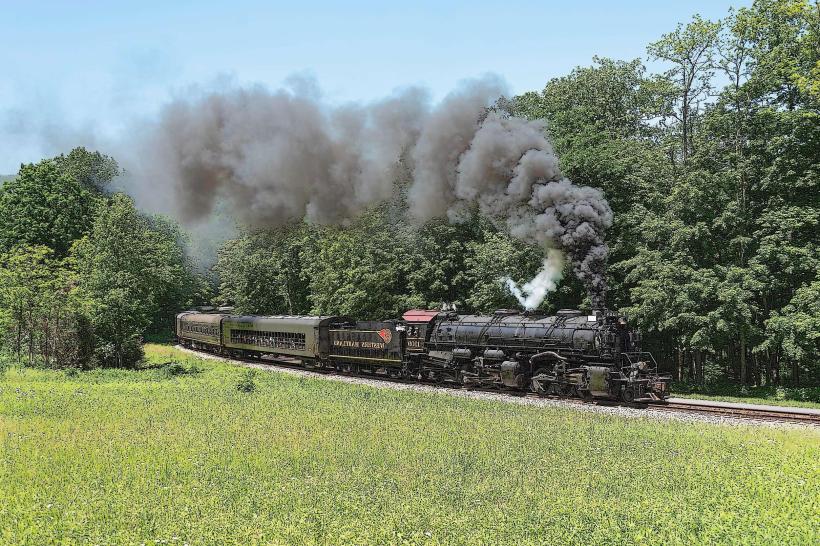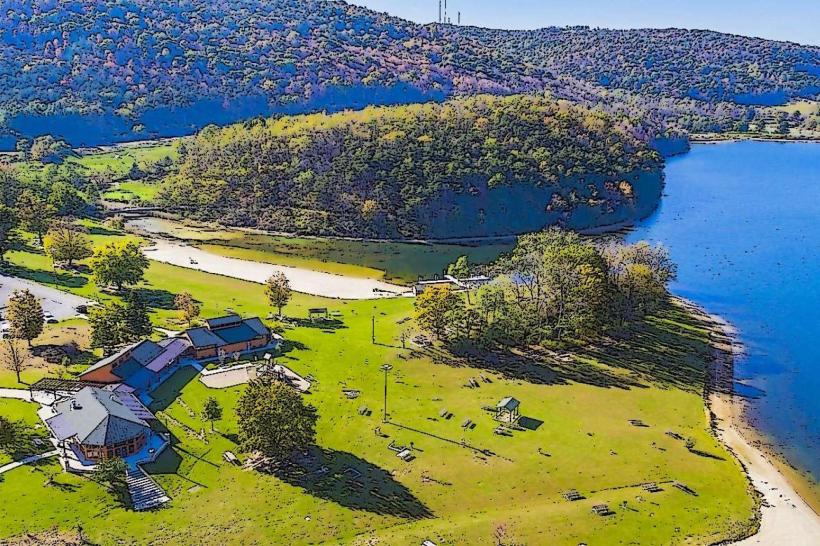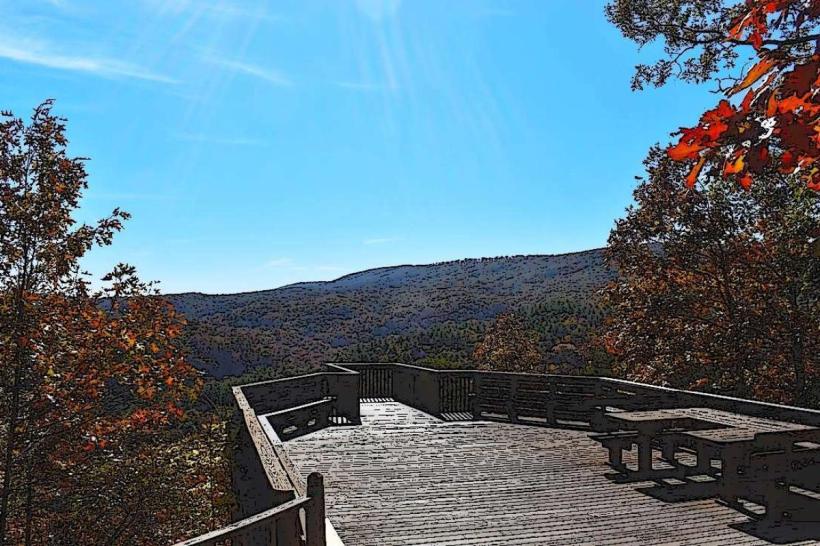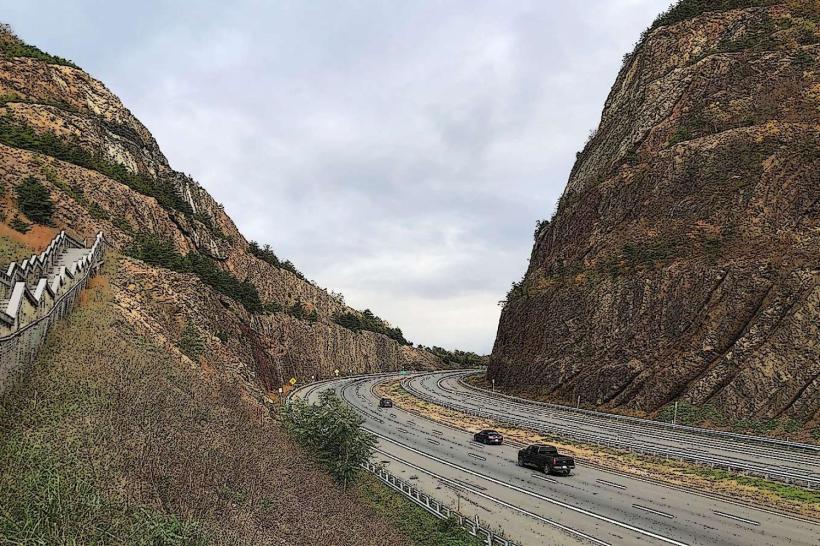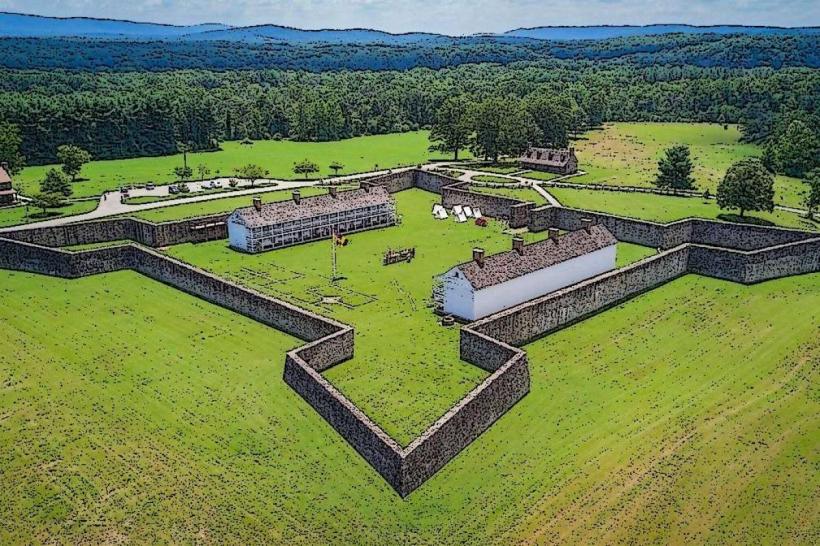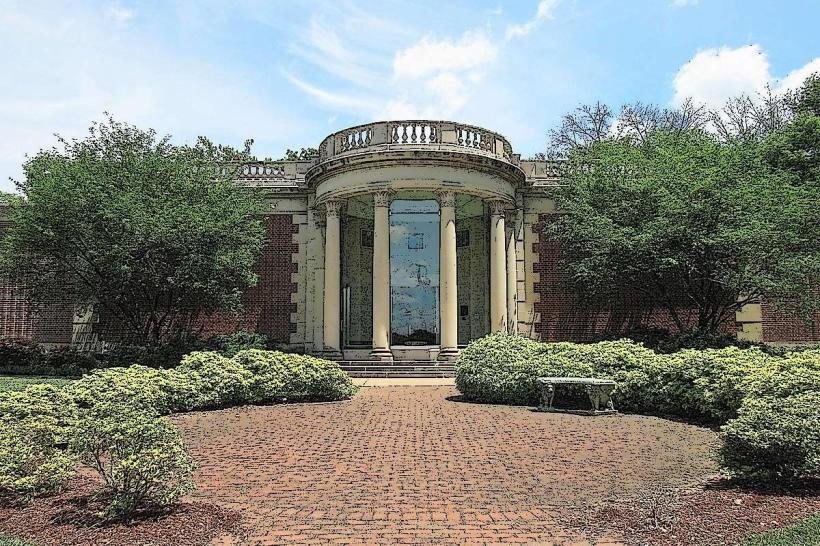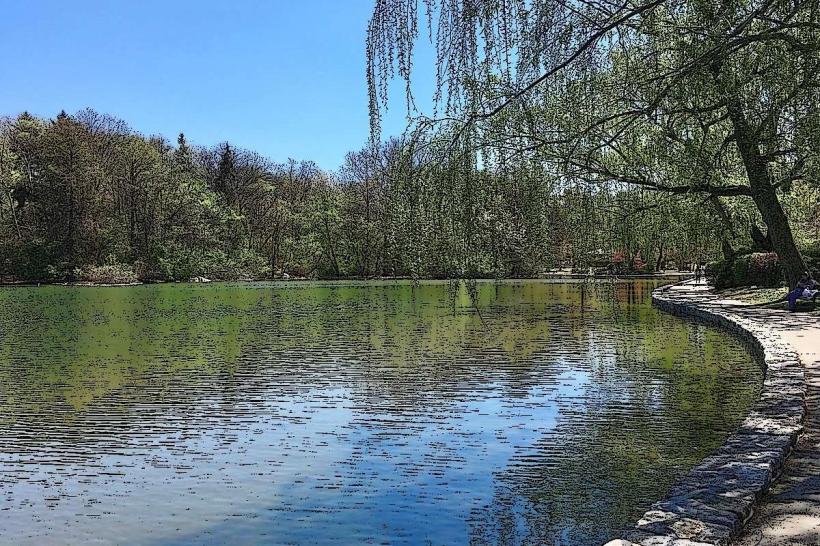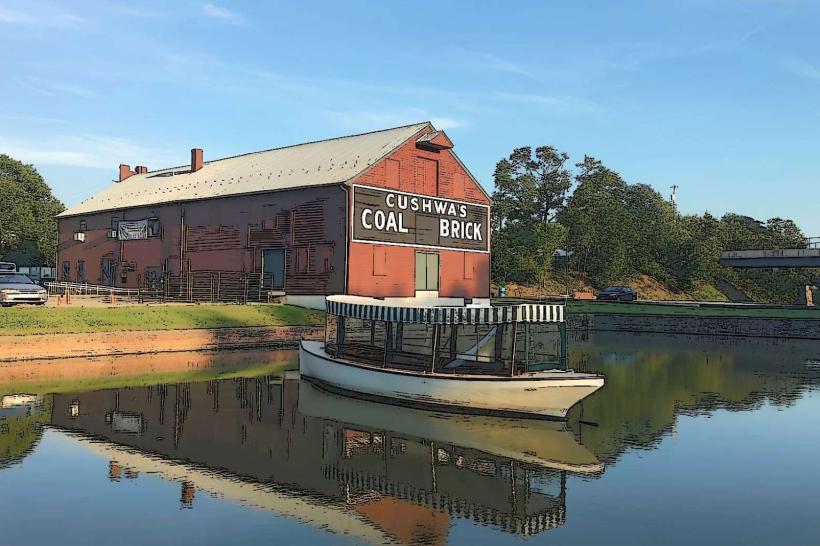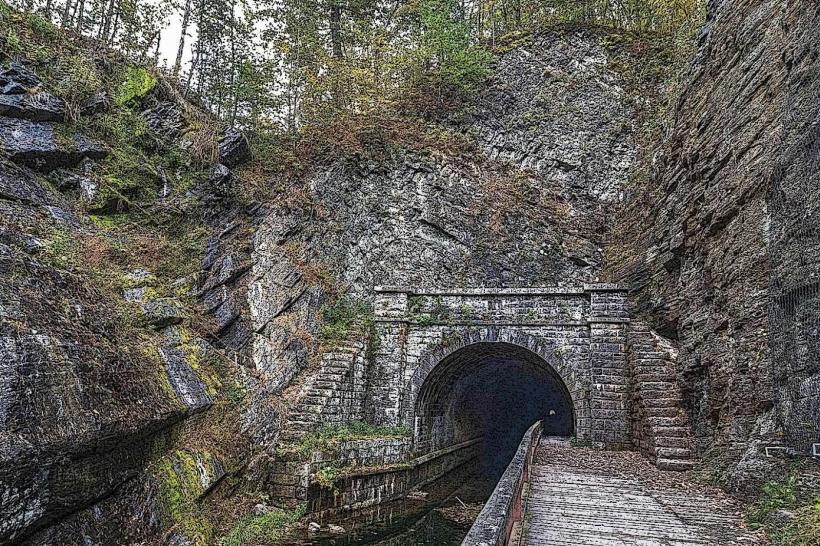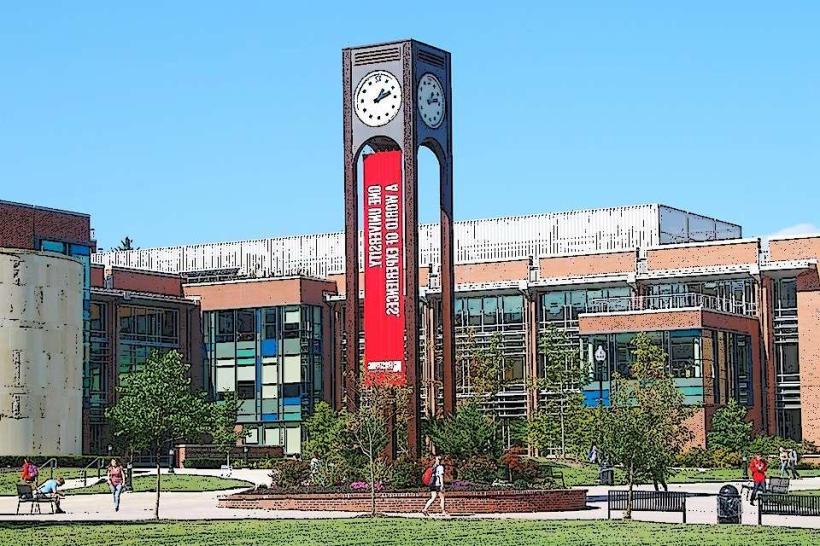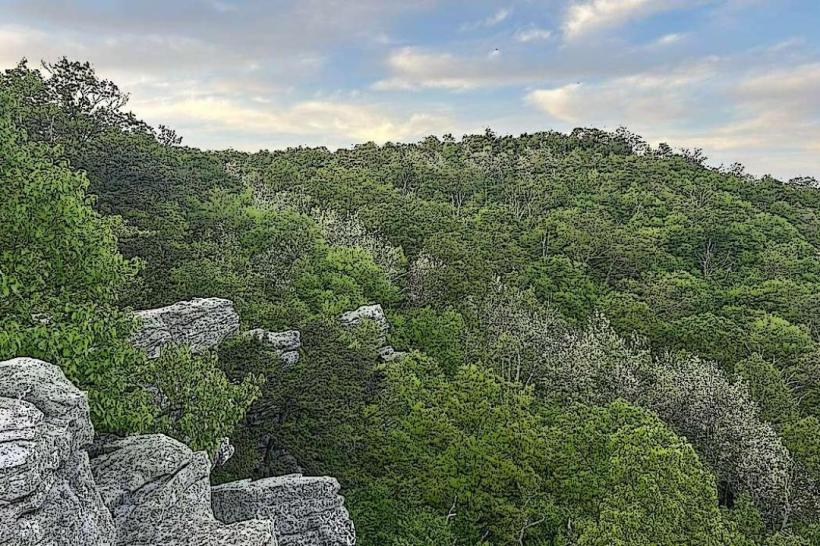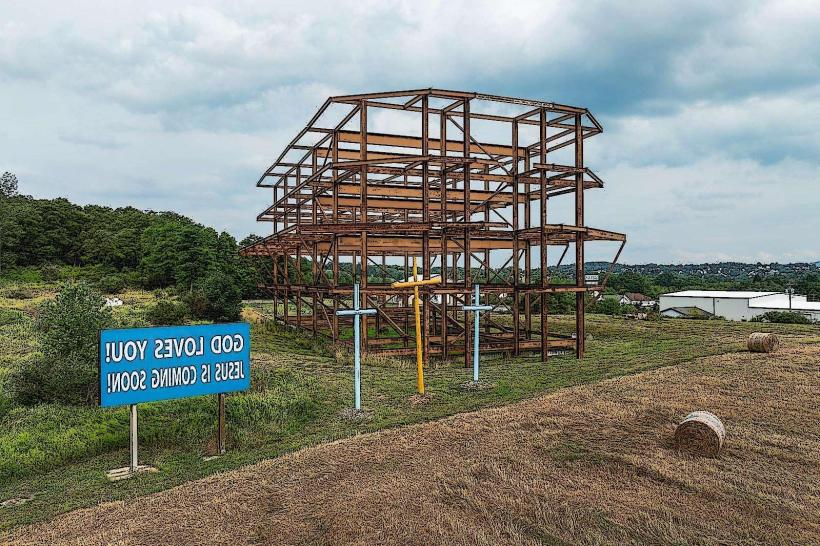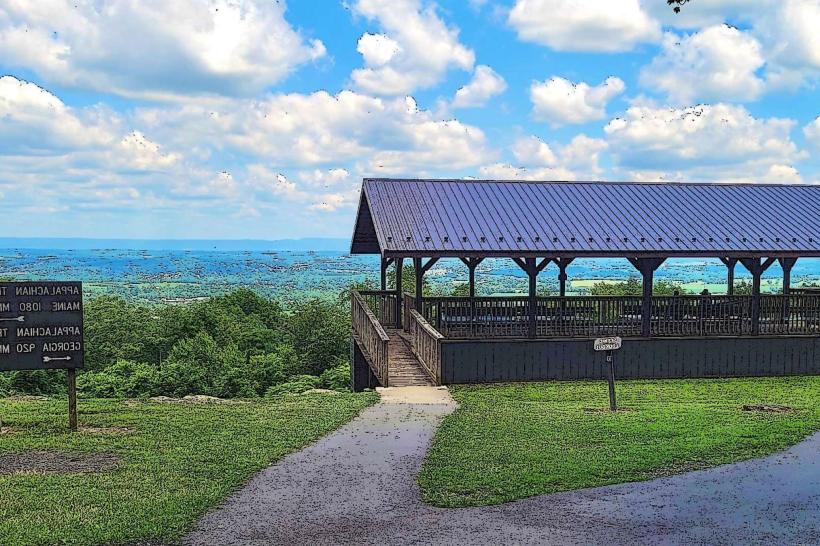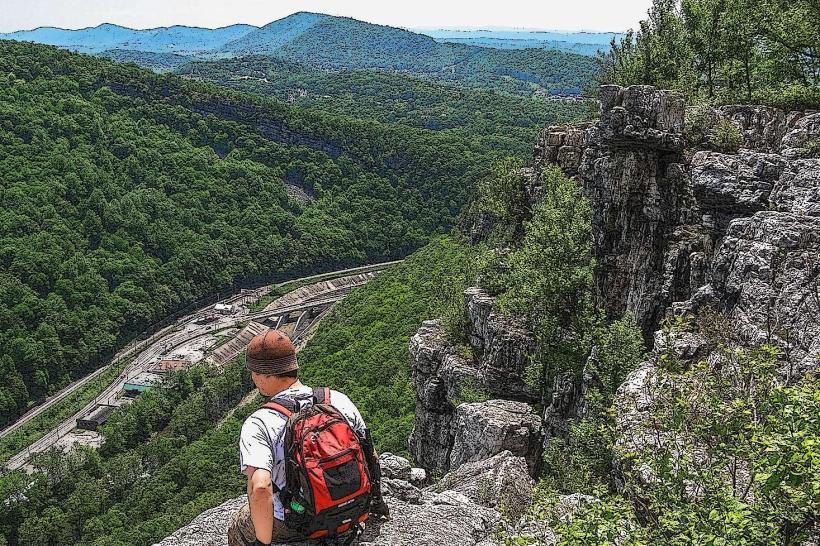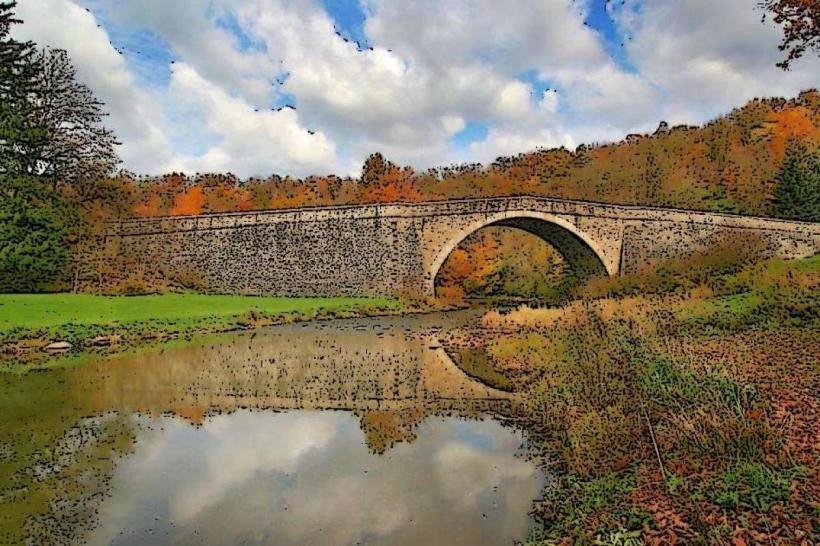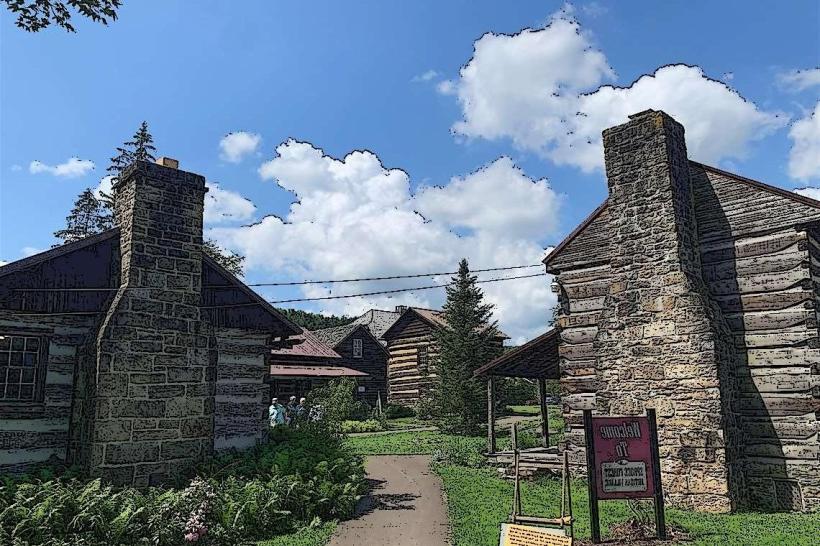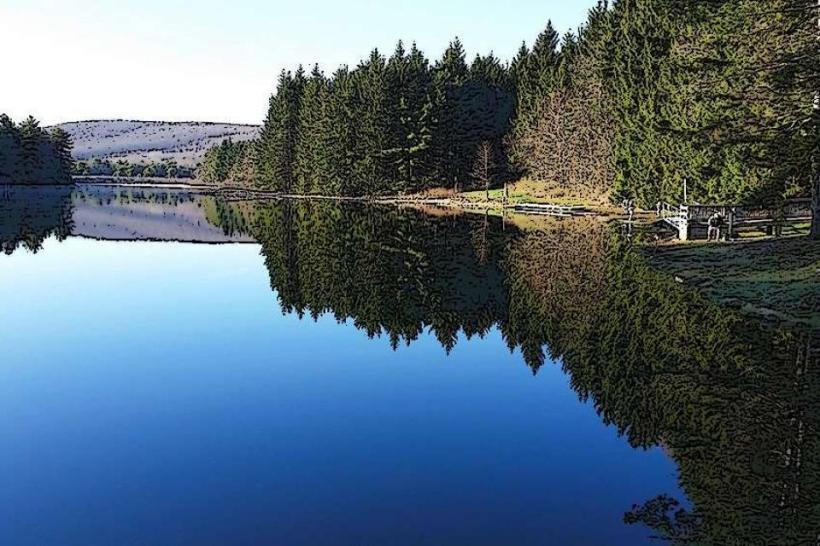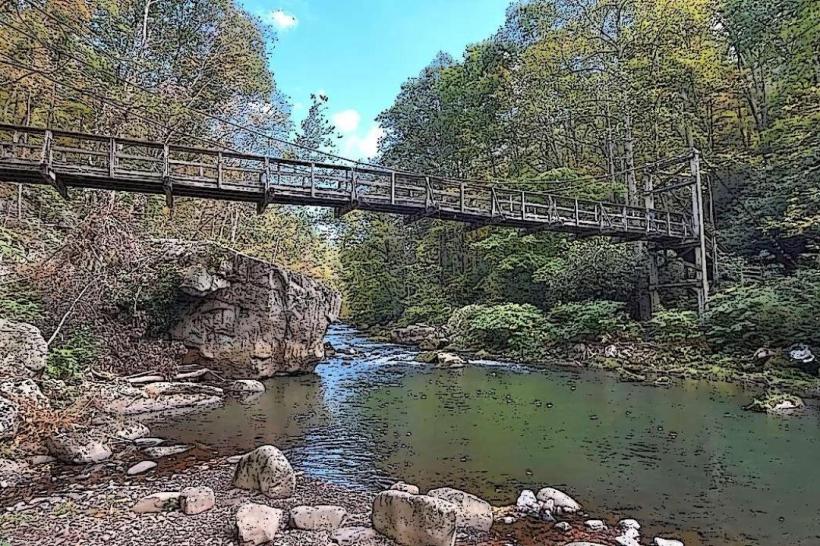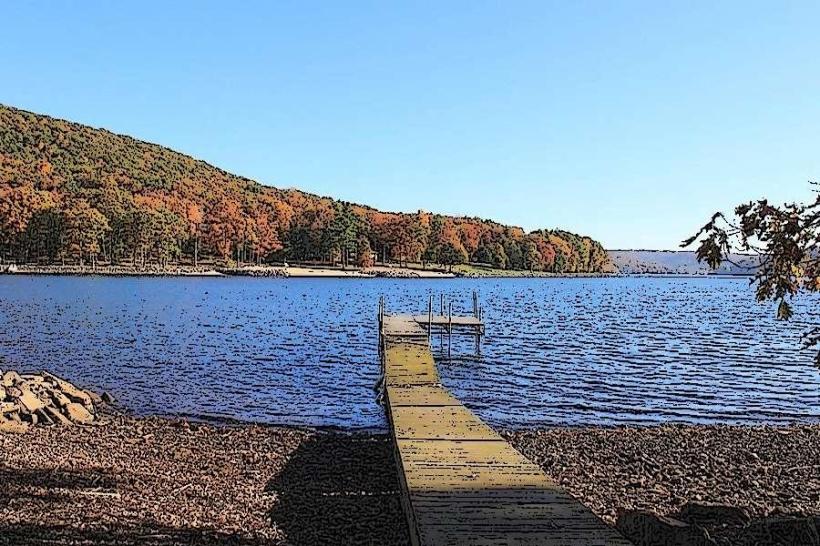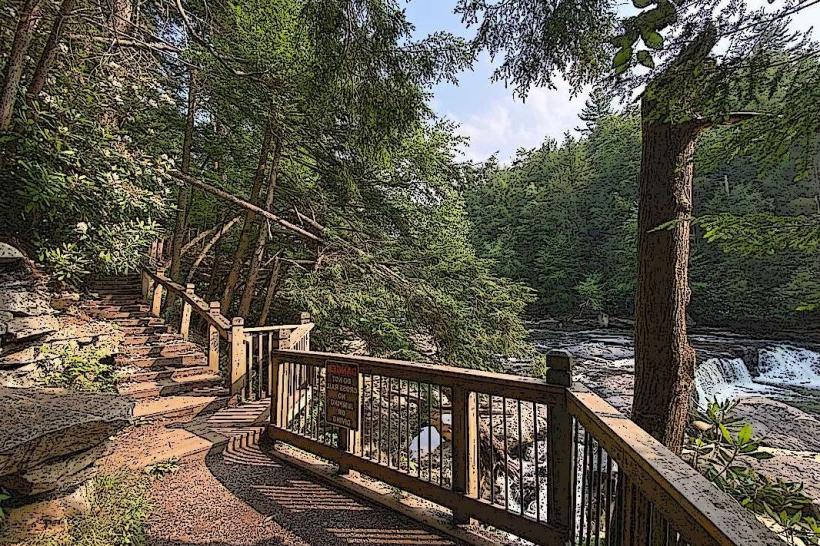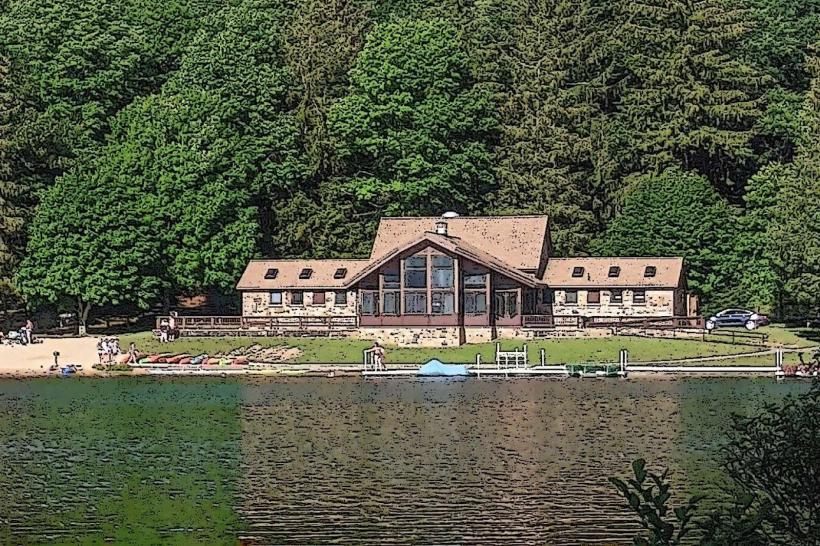Information
Landmark: Chesapeake & Ohio Canal National Historical ParkCity: Hagerstown
Country: USA Maryland
Continent: North America
Chesapeake & Ohio Canal National Historical Park, Hagerstown, USA Maryland, North America
Overview
The Chesapeake & Ohio Canal National Historical Park, often called the C&O Canal, winds for about 184.5 miles along the Potomac River, starting in Georgetown’s cobblestone streets, passing through Maryland, and ending in Cumberland, what’s more it protects the remnants and towpath of the Chesapeake and Ohio Canal, a 19th-century waterway that once carried coal, fresh-cut lumber, and farm goods from the Appalachian hills to Georgetown’s busy port.Work on the C&O Canal started in 1828 and wrapped up in 1850, built to create a smooth, navigable waterway running alongside the Potomac River, where the current once glinted in the afternoon sun, then they built it to rival the Baltimore and Ohio Railroad, hauling bulk goods in mule-drawn canal boats that glided down a channel nearly 60 feet wide.If I’m being honest, The canal has 74 lift locks, 11 aqueducts, and timeworn lockhouses that keep water levels steady and guide boats through, their doors creaking as they open, to boot the canal never made it all the way to Pittsburgh as planned, but it kept running until 1924, when rising floodwaters and the growing pull of the railroads finally shut it down.The canal stands as a key piece of early American ingenuity, a waterway that once carried heavy cargo and echoed with the creak of wooden barges, alternatively the buildings and riverbank scenery reveal vivid glimpses of 19th‑century trade, hard work, and daily life along the Potomac.The park begins in Georgetown’s busy streets, then winds its way into the wild, rocky mountains of western Maryland, subsequently the landscape stretches from quiet floodplains and shimmering wetlands to cool limestone caves, dense forests, and wide, glinting river views.The park’s corridor follows the north bank of the Potomac for most of its length, with the towpath-a flat strip of packed dirt once trodden by mules hauling canal boats-as its main route, consequently the Towpath Trail is the heart of the recreation area, a winding path that follows the canal from end to end, perfect for walking, cycling, or hearing your footsteps crunch on gravel.People come here to hike, bike, run, or ride horses, in addition the trail stays mostly flat, with long stretches where the ground crunches softly underfoot, so it’s ideal for distance cyclists and laid‑back outings alike, moderately In Cumberland, Maryland, it links up with the Great Allegheny Passage, letting cyclists ride straight from Washington, D, therefore c.Actually, to Pittsburgh, Pennsylvania-a journey of more than 300 miles, past rivers and rolling hills, at the same time just outside Great Falls, Maryland, the Billy Goat Trail winds through three distinct sections, each with its own level of challenge-think sharp rock scrambles, lung-burning climbs, and sweeping views of the Potomac River cutting through the gorge.Visitors can slip a canoe or kayak into the canal’s glassy water, then head out to explore the nearby Potomac River, in turn the park offers several launch sites and a few spots where you can rent a boat, from quiet docks to a weathered shack by the water.You can fish for bass or sunfish in the canal or along the riverbank, as long as you’ve got the right permit in hand, consequently historic Structures and Sites-Locks and Lockhouses: The park safeguards 74 vintage lift locks, once used to raise and lower boats as they climbed past rocky drops in the canal.Several antique lockhouses-once the cozy homes of canal lockkeepers-have been restored, and a few now welcome guests for the night, to boot eleven stone aqueducts lift the canal over rivers and narrow streams, their arches showing off precise, hand-cut masonry.Along the towpath, you’ll still find original landmarks, like the white-painted Great Falls Tavern, now welcoming visitors as both a center and a museum, moreover the park features several visitor centers and museums with hands-on exhibits, guided tours, and programs that bring its history to life.At the Great Falls Tavern Visitor Center, just steps from the roaring falls, you’ll find displays on canal history, a slight museum shop, and a trailhead leading to the Billy Goat Trail, in conjunction with at the Williamsport Visitor Center, you can explore exhibits on how the canal once ran and join walking tours-maybe hear the crunch of gravel under your shoes as you go.Not surprisingly, The Cumberland Visitor Center marks the canal’s western end, offering rich interpretive displays and maps you can flip through under the warm glow of its antique brass lamps, simultaneously the park’s rich mix of ecosystems shelters countless plants and animals, from floodplain forests shaded by towering sycamores to stands of cottonwood and willow along the river’s edge.Wetlands and marshes shelter frogs, herons, and countless other creatures, their reeds swaying gently in the wind, as well as limestone caves shelter colonies of bats, their wings whispering in the shadowy.Just so you know, More than 1,500 kinds of plants grow here, along with a lively mix of birds-hawks circling high, herons wading in the shallows, and songbirds darting through the trees, equally important in Great Falls, the canal and river slice through steep cliffs and jagged rock, creating a stretch of rugged scenery that draws visitors for its striking natural beauty.You can pitch a tent at one of several hiker-biker campsites dotted along the towpath, perfect for an overnight stay under the stars, besides these rustic spots come with the basics-think a blackened fire ring for cooking and a simple composting toilet tucked under the pines.One of the park’s standout features is that you can rent restored historic lockhouses for the night, waking to the creak of ancient wood and the quiet flow of the canal, along with you can visit the park any time of year, entering from spots scattered all along the canal-maybe by the vintage stone bridge or near the willow trees.Most visitor centers run on seasonal hours, often opening in the morning and closing by late afternoon, just as the scent of pine drifts through the cooling air, at the same time you can wander through most areas without paying, but there’s a minute charge to reach the Great Falls section run by the National Park Service, where the roar of the water greets you.The Chesapeake & Ohio Canal National Historical Park preserves a vivid slice of 19th-century American industry, where aged stone locks stand beside a winding green trail perfect for a long afternoon meander, on top of that visitors can explore centuries-vintage landmarks, learn something modern at engaging exhibits, and hike wide, sunlit trails-all in the heart of a scenic river valley.The towpath trail ranks among the East’s favorite long-distance routes, easy to reach and busy with hikers, cyclists, and nature lovers who pass under rustling sycamore trees, likewise by sharing the canal’s history, safeguarding its wildlife, and offering trails where you can hear gravel crunch underfoot, the park stands as a treasured cultural and natural haven in the Mid-Atlantic.
Author: Tourist Landmarks
Date: 2025-10-06

